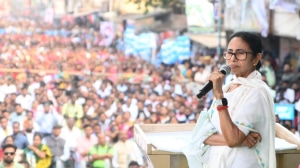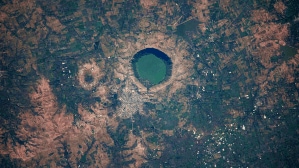100 years of Soldiering On
The last surviving elephant of the Indian Army was called Sonepat,informs a yellowed photograph of the aforementioned animal...
The last surviving elephant of the Indian Army was called Sonepat,informs a yellowed photograph of the aforementioned animal,dating back to 1932. Another rare picture shows Indira Gandhi donating all her gold jewellery to the national relief fund to support the 1962 war effort.
These and hundreds of other poignant moments from Indias defence history have been captured in a unique
limited-edition coffee-table book,Soldiering On,brought out by the Ministry of Defence to commemorate the 100th anniversary of its fortnightly journal,Sainik Samachar.
A press release on the suppression of the 1946 Naval mutiny,stories about the struggle of Independence and the eventual departure of the British Army from Indian soil,the declaration of Delhi as capital of India,the early stages of formation of the wings of the armed forces and its major institutions,and invaluable documentation from the two World Wars are just some of the thousands of historically significant moments in the book,compiled from articles,photographs and original press releases that appeared in editions of Sainik Samachar,which was launched in 1909 as the Fauji Akhbar.
Divided into four chapters,the book is also interspersed with advertisements of historical interest in their own right dating back to pre-Independence times and non-military articles by authors who later rose to prominence.
While one chapter is devoted to trivia about Sainik Samachar,another is dedicated to the period between 1909 and 1947,when British soldiers left India.The ministry has dug out a rare page from its records titled The Sun Sets on the British Empire that depicts the lowering of the Union Jack at the Residency in Lucknow on August 13,1947,more than 90 years after it was taken down during the 1857 mutiny. A second story,Comrades Party,reports on the departure of Pakistani officers after the partition and the final party organised as a farewell gesture.
Standing out for their archival value are press communiqués and articles from the defining moments of the armed forces the defence of Kashmir in 1947-48,the integration of Hyderabad,Goa & Diu to India,the three modern wars after Independence but cartoons depicting the lighter side of the armed forces are just as fascinating.
Also not to be missed are the rare photographs,including Indian troops manning a lonely post at Chushul,patrolling along the Pangong Lake in Ladakh in 1962,and pictures of Indian defence personnel in action on foreign soil during UN peace-keeping missions in Korea,Congo,Gaza and the then Indo-China.
It is also interesting to note the obvious biases of the British editors who ran the magazine before Independence. Particularly involving is an hour-by-hour account of rebellious actions by the Indian Naval Ratings at a port in 1946 and an announcement about the total Indian casualties in the action.
Sainik Samachar A Timeline
1909: The journal takes off as a 16-page weekly called Fauji Akhbar from Allahabad,with an office in Shimla. Priced at an anna a copy,it has a limited circulation in Urdu and two-page Roman Urdu among JCOs,NCOs and jawans of the Indian Army
1911: Fauji Akhbar starts publication from Lahore,resulting in a substantial reduction in the cost of production. The rate of annual subscription is Rs 2.4 (Rs 2.25 paise)
1914: The journal starts publishing updates about World War-I. A daily supplement,carrying news about the war,got started
1923: The English edition makes its debut. It also introduces a lucky draw system,in which the winner stood to get a cash prize of Rs 5
1939: With the start of World War-II,a two page bi-weekly supplement is added. An overseas edition in Roman Urdu started from Cairo for Indian troops in the Middle East. The circulation shoots up,exceeding one lakh at one time
1940: A four-page bi-weekly called Jang-Ki-Khabren (War News) in English,Urdu,Hindi,Roman Urdu,Punjabi,Tamil,Telugu and Marathi is started. Circulation reaches three lakh
1947: The office of Fauji Akhbar moves from Shimla to Delhi. Publication is suspended for about a year due to the migration of staff and printers
1954: Fauji Akhbar is renamed as Sainik Samachar for all its nine editions,namely English,Urdu,Roman-Hindi,Hindi,Punjabi,Gorkhali,Marathi,Tamil and Telugu
1959: A Golden Jubilee edition is published on completion of 50 years of the journal
1969: A Diamond Jubilee edition is published when the journal completes 60 years
1971: A Bengali edition starts from Delhi. The post of editor-in-chief is created to head the magazine
1997: The weekly becomes a fortnightly. The price changes from Rs 0.50 to Rs 5



- 01
- 02
- 03
- 04
- 05




























